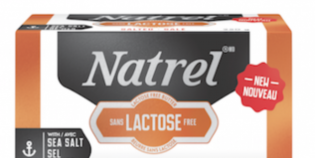People’s attention spans are dwindling, but it’s not all bad news for marketers. Tech-savvy consumers are getting better at processing information and encoding that information to memory, according to a new study from Microsoft Canada.
To understand what impact today’s digital lives are having on attention spans, Microsoft conducted a gamified online survey of 2,000 Canadians in December 2014. The company also did a deeper dive with neurological research on 112 participants. Their brain activity was recorded using EEGs and their behaviour was filmed as they interacted with different media and performed various activities across devices.
When it comes to “sustained attention,” or the ability to maintain prolonged focus, the study found Canadians struggle. In the survey, 44% of Canadians agreed they really have to concentrate to stay focused on tasks. This is higher among early tech adopters (68%), heavy social media users (67%) 18-24-year-olds (67%) and heavy multi-screeners (57%).
While people’s attention levels are dropping, that’s only true in the long term. The study found early tech adopters and heavy social media users have more “intermittent bursts” of high attention. They’re better at identifying what they want/don’t want and need less to process and commit things to memory.
“While overall our long-term focus does erode with increased digital consumption and digital behaviours, we see that it’s actually changing the way that we process information,” said Alyson Gausby, consumer insights lead at Microsoft Canada.
“We see that consumers who have more digital lives… are actually getting better at processing information and then encoding that to memory. So that is good news for marketers overall. It changes the way we market to them.”
To get consumers’ attention, tactics like branded content, native advertising and useful, entertaining and shareable content work best, according to the report. “It’s really important that marketers be very clear, to the point, very personal and relevant… anything that will lead consumers to want to engage with the content,” said Gausby. “Today, we don’t always necessarily have the luxury of building a story, so sometimes we need to craft headlines that can say it all and pare down our message so it’s as clear and concise as possible.”
The study also looked at “selective attention,” or the ability to filter out distractions that aren’t related to what a person is doing. Selective attention isn’t affected by social media usage, media consumption or device usage. But it is affected by multi-screening: heavy multi-screeners find it difficult to filter out irrelevant stimuli.
But since consumers turn to their secondary screens to fill in those “in-between moments” when they might otherwise drop off completely, they’re more engaged overall and primed for immersive experiences, according to the report.
To reach multi-screeners, Microsoft suggests harnessing the power of peripheral motion. Rich media ads, for example, can help capture attention. “Whether we’re on the plains of Africa or on a busy street in New York, I think we’re sort of trained to notice what’s moving,” said Gausby. “So that plays into why engagement levels are so much higher for rich media, for example.”
One result that Gausby found surprising was that there aren’t significant differences across age or gender with regards to attention spans. “What we do has a much bigger impact than who we are,” she said. “Our digital behaviours are correlated with attention spans and demographics are not.”









